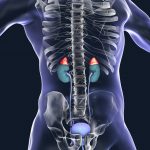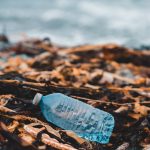Toxicity & Chronic Illness: Why Naturopathic Doctors Must Lead
KERI LAYTON, ND
Every generation of naturopathic doctors decries the rising generation as an erosion of true naturopathy. Let me settle into my rocking chair and confess: I’m no better. While I lament the opportunity lost by older NDs who have dodged engagement with the primary-care model entirely, I also cringe at the younger NDs who sequester themselves in boutique practices, charging “what [they] are worth,” and using functional medicine testing as absolutes without doing the real work that sets us apart as naturopathic doctors.
As important as dissecting cadavers and memorizing pathologies were to our medical education, so was the soft education we received while dining in a vegetarian cafeteria, engaging in honest dialogues, and pursuing toxin-free lives on student budgets. We naturopathic doctors are likely continuing to live those lives, but I wonder if we do enough to quantify its preventative value for our patient base. The value of functional medicine is moot if we note its nuance as genetic finites without stepping back and identifying the epigenetic pressure that caused the variation.
Prevention-Centered Medicine
The use of naturopathic medicine has expanded, and acceptability by conventional medicine has increased.1 It is a full schedule to treat patients diagnosed with conditions that have limited conventional treatment options – autoimmune disease, allergies, and cancer being chief among them. But it denigrates the full power of our medicine to simply identify the triggering event without also pushing the trend towards prevention. As our place in the spectrum of healthcare expands, it’s our moral imperative to remember that our foundation is staked in a toxin-free world.2,3 Medicine needs our voice, to encourage policy, screening, and treatment that consider each person as a whole member of the larger world.
The correlation between autoimmune disease and environmental toxicity has been established.4-6 High levels of endocrine-disrupting chemicals are associated with some of the most prevalent and costly conditions, including obesity,7 diabetes,8 cancer,9 and autoimmune disease.10 Furthermore, these effects have been demonstrated to impact future generations. The single nucleotide polymorphisms (SNiPs) we so thoroughly examine are not bedrock to the human genome, but rather genetic receipts from the pressure that generations of Silent Springs have put on us.11 The hypothetical challenges of a person’s metabolic pathways are not enough to move the needle for medicine, and it’s lazy. We need to know what the risks are to the people we are treating, based on their location, the environmental load associated with the geography of their ancestry, and their occupations. And we need to be measuring the real-time load on our patient base.
The Importance of Tracking
Today, we have environmental medicine doctors that biomonitor their patients. We need to surpass this specialty model if we are to continue serving as the moral conscience of medicine. In the same way that beating the drum of gut health over decades eventually resounded in the halls of conventional medicine with the sexy new title of “SIBO,” it’s time to move assessment of environmental toxicity from the recesses of IV rooms and sweat lodges to the shiny waiting room of primary care. Counting this load should be part of the annual “well visit.” The urgency of this is augmented by the rolling-back of environmental protections under the Trump administration.12 Rather than waiting to see an increase in autoimmune disease, cancer, and other chronic diseases known to be exacerbated by environmental chemicals, we need to be monitoring patients for them now and working to prevent this increase in pathology.
Correlating body burden to disease prevention is not easy.13,14 Currently, the only toxic agent that is routinely tracked in primary care is lead, and only routinely in infants. It is worth not only adding routine BPA, pesticide, phthalate, solvent, and heavy metal testing15 to your annual patient “well visits,” but also creating a method for tracking this data within your practice. Accumulating trends data that correlate conditions to triggering events will not stand alone as proof of causation, but it could help inform research agendas for our field. With the imminent challenge of predicting who will have long-lasting symptoms from COVID-19, it will be interesting to track correlations between the incidence of lasting symptoms or the triggering of autoimmune disease with total body burden of environmental agents.
Remembering Who We Are
Those who choose Primary Care quickly find themselves drowning in the same model that has failed the medical doctors. Reimbursement is scarce, “fishing” labs are not reimbursed, and patients are more likely to come in for acute visits than preventive. Changing medicine has not generally yielded much recognition or wealth, but it honors the unique commitment we made when we took up this training. We have to commit the time and effort required to build a wall of data that will push policy toward prevention and protection of our patient base. Our field’s birthright is a prevention-centered model of primary care, assuming we are focused, organized, and collaborative enough to claim it.
References:
- National Center for Complementary and Integrative Health. Naturopathy. Last updated September 2017. NCCIH Web site. https://www.nccih.nih.gov/health/naturopathy. Accessed January 19, 2021.
- Allen J, Montalto M, Lovejoy J, Weber W. Detoxification in naturopathic medicine: a survey. J Altern Complement Med. 2011;17(12):1175-1180.
- Cayleff SE. Nature’s Path: A History of Naturopathic Healing in America. Baltimore, MD: Johns Hopkins University Press; 2016.
- Chighizola C, Meroni PL. The role of environmental estrogens and autoimmunity. Autoimmun Rev. 2012;11(6-7):A493-A501.
- Holladay SD. Prenatal immunotoxicant exposure and postnatal autoimmune disease. Environ Health Perspect. 1999;107 Suppl 5(Suppl 5):687-691.
- Pollard KM, Hultman P, Kono DH. Toxicology of autoimmune diseases. Chem Res Toxicol. 2010;23(3):455-466.
- Petrakis D, Vassilopoulou L, Mamoulakis C, et al. Endocrine Disruptors Leading to Obesity and Related Diseases. Int J Environ Res Public Health. 2017;14(10):1282.
- Sargis RM, Simmons RA. Environmental neglect: endocrine disruptors as underappreciated but potentially modifiable diabetes risk factors. Diabetologia. 2019;62(10):1811-1822.
- Endocrine Society. Impact of EDCs on Hormone-Sensitive Cancer. Available at: https://www.endocrine.org/topics/edc/what-edcs-are/common-edcs/cancer. Accessed January 25, 2021.
- Predieri B, Bruzzi P, Bigi E, et al. Endocrine Disrupting Chemicals and Type 1 Diabetes. Int J Mol Sci. 2020;21(8):2937.
- Pizzorno JE. The Toxin Solution: How Hidden Poisons in the Air, Water, Food, and Products We Use Are Destroying Our Health — And What We Can Do to Fix It. New York, NY: HarperOne; 2018.
- Environmental & Energy Law Program. Chlorpyrifos Pesticide Use. October 3, 2017. EELP Web site. https://eelp.law.harvard.edu/2017/10/chlorpyrifos-pesticide-use/. Accessed January 19, 2021.
- Association of Public Health Laboratories. Guidance for Laboratory Biomonitoring Programs: Developing Biomonitoring Capabilities. 2019. APHL Web site. https://www.aphl.org/aboutAPHL/publications/Documents/EH-Oct2019-Biomonitoring-Guidance.pdf. Accessed January 19, 2021.
- Science Direct. Body Burden. [Collection of abstracts] Available at: https://www.sciencedirect.com/topics/medicine-and-dentistry/body-burden. Accessed January 19, 2021.
- Centers for Disease Control and Prevention. Fourth National Report on Human Exposure to Environmental Chemicals. January 2019. CDC Web site. https://www.cdc.gov/exposurereport/pdf/FourthReport_UpdatedTables_Volume1_Jan2019-508.pdf. Accessed January 19, 2021.

Keri Layton, ND graduated from Mount Holyoke College, then received her degree in Naturopathic Medicine from Bastyr University in 2006. She completed a residency in Integrative Family Medicine at Metametrix Clinical Laboratories in Atlanta, GA. Dr Layton has been in private practice in New England since 2008. She currently lives outside Boston with her husband and 2 kids, where she focuses on helping families find their best health amid the rigors of modern life. Learn more about her and her practice at www.KeriLayton.com.










